 Award Software, Inc.
Award Software, Inc.
Award were a BIOS manufacturer during the early PC / DOS era. Having started in 1983 by Rene Vishney and Bob Stillman in San Jose, California, they moved the following year to Los Gatos, CA.
On 16th April 1998, the company merged with Phoenix Technologies Ltd, with the name Phoenix being the surviving company entity. Despite this, BIOS code continued to attribute the copyright as belonging to Award Software Inc.
This page serves to provide a summary of the various releases of Award BIOS'. As with all BIOS', the code is specific to each motherboard manufacturer and model. Some happen to be interchangeable between very similar models (those that use an identical chipset), though this is far from guaranteed.
Award Modular BIOS v4.01 (1991) - v4.2x (1992)
These versions are rarely seen these days. They had a blue startup screen, which was used right up to the the first v4.50 release.
Award Modular BIOS v4.50 (1993-1996)
Also known as Award EliteBIOS, version 4.50G arrived in 1993. This would become one of the most widely-used BIOS on 486 motherboards, and saw incremental improvements from 1993 through to 1999 when it was succeeded by v6.0 (Medallion). The letters suffixed after the version number indicate some of the functionality in a specific minor version. 'G' indicates 'Green PC' features, 'P' indicates Plug & Play, 'N' means it has ' PhoenixNet' support, 'M' is a multi-language version, and 'A' can sometimes mean ACPI support.
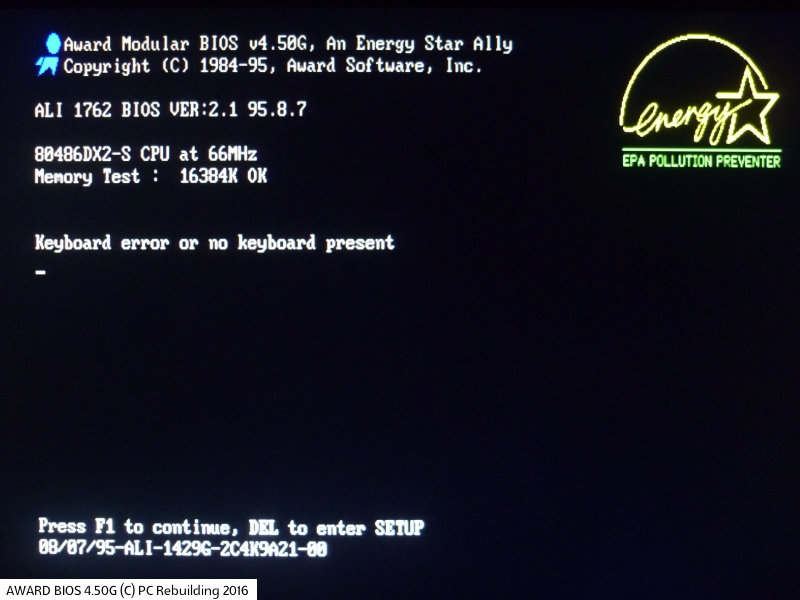
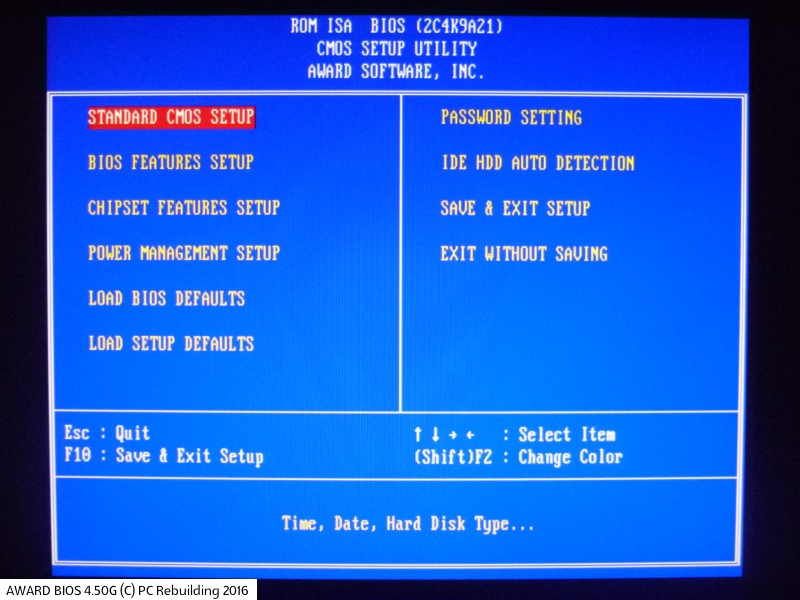
An example of the Award BIOS v4.50G startup screen and CMOS Setup Utility main menu
This series introduced a new black startup screen with a very different layout. Some had the blue Award medallion logo in the top-left corner while others didn't.
Only the very first version of 4.50 (with no suffix) did not provide Green PC features - this was released in 1993.
All versions in the 4.50 series (4.50, 4.50G, 4.50GP and 4.50PG) did not provide boot capability from CD-ROM or SCSI drives. Version 4.50G was the first to show the EPA Energy Star logo on the initial boot screen. Version 4.50GP is very rare, and required a separate option ROM for its Plug & Play support. It was quickly succeeded with v4.50PG which is much more common, and can be seen on motherboards up to and including 1996.
Award Modular BIOS v4.51 (1995-1997)
Version 4.51 succeeded 4.50 in 1995. The capability to boot from a CD-ROM or SCSI device arrived with some of the v4.51 (4.51G, 4.51GP and 4.51PG) releases (though not all), as well as booting from an LS-120 floppy, IoMega ZIP drives and network cards. This version also supported automatic IDE hard disk detection, UltraDMA transfers and PIO modes 0 to 4, LBA hard disks and drives over 8.4 GB in capacity.
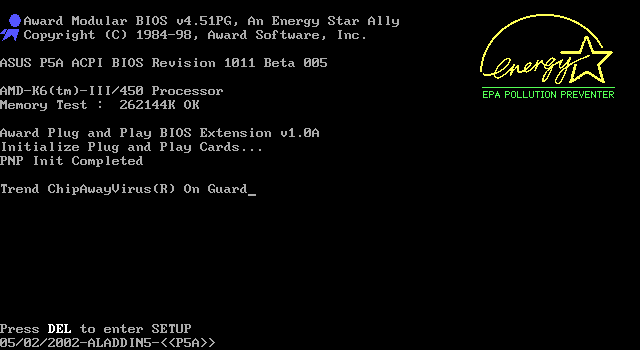
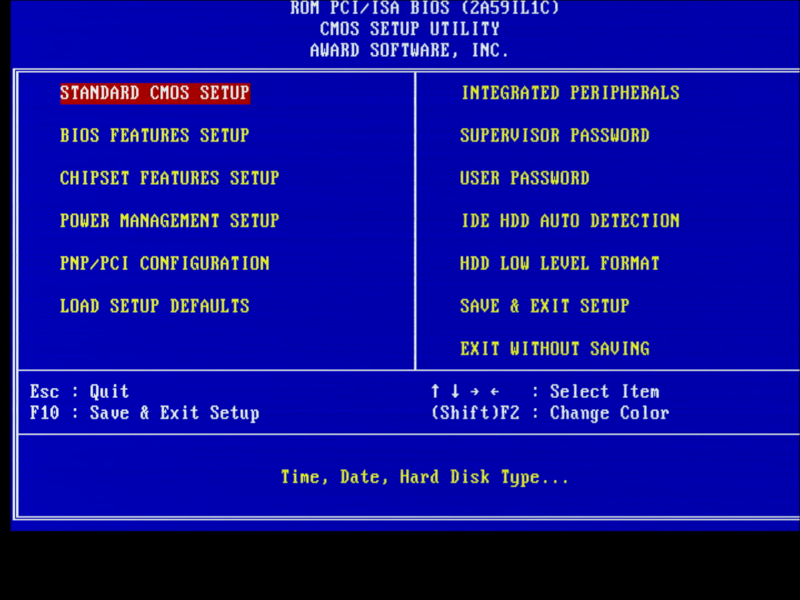
An example of the Award BIOS v4.51PG startup screen and CMOS Setup Utility main menu
It also supported a boot block within the BIOS for fault recovery, as well as ROM compression (where the BIOS code is compressed in the EPROM and is decompressed to RAM upon startup).
Click here for the CMOS Setup Utility Guide for AwardBIOS v4.51G (PDF, (c) 1999 Phoenix Technologies, Ltd)
Award Modular BIOS v4.60 (1998-1999)
The v4.60 series is pretty rare, only used on some Taiwan-based manufacturers such as Acer, Zida, FIC and Leadtek. It was believed to just be a minor incremental upgrade on v4.51.
Award Modular BIOS v6.00 (2001)
In April 1998, the same month Phoenix acquired the company, Award released v6.00PG. Codenamed 'Medallion', this was the successor to their v4.5x series (Award EliteBIOS).
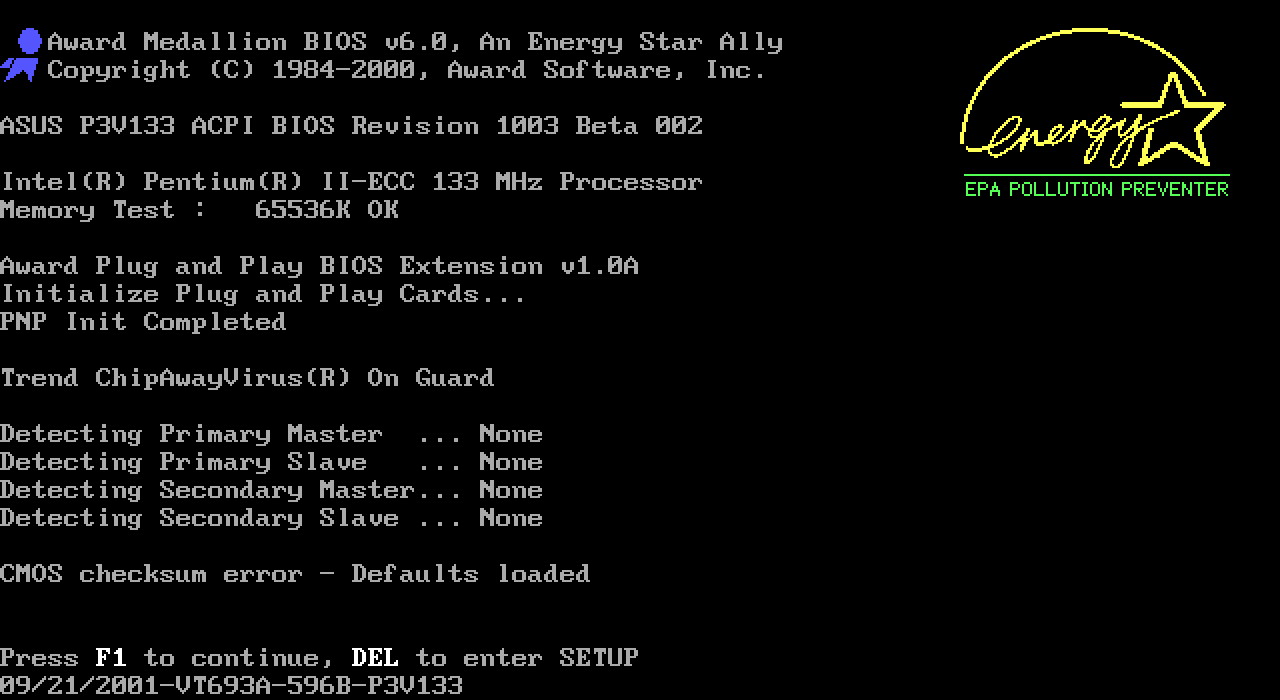
An example of the Award BIOS v6.0 startup screen
Flashing an Award or Phoenix-Award BIOS
Award Software created a utility called AWDFLASH (AwardBIOS Flash Utility) - the one I tend to use is v8.99. This runs in DOS, and takes a .BIN file as the new BIOS file. For Windows, Award created a utility called WinFlash (AwardBIOS WinFlash Utility) v1.94. They also had a utility for OEMs to customise the startup screen, called MODBIN.
Note there is always a risk when overwriting an EPROM chip such as the one the BIOS code is stored on. It sounds obvious, but I'll say it anyway: once writing begins, power must be retained until writing is complete. A power cut is probably the most obvious risk here, though if you're overwriting an old EPROM/EEPROM, these ICs do go bad over time. Sometimes multiple successive writes will work in case the first attempt fails. I personally take the chance anyway of using the PC with the BIOS installed and run AWDFLASH or similar, and haven't ever had problems. If you do get into a situation where after an update the PC no longer POSTs, you will need to 'burn' the EPROM/EEPROM using an EPROM burner, such as the TL866 programmer, also commonly seen as the MiniPro, along with the included Windows programming utility, XP8710. For more information on this programmer, see my XT Restoration Project - Part 2.